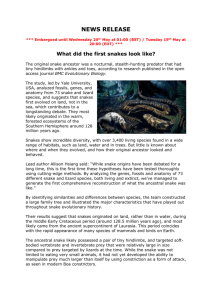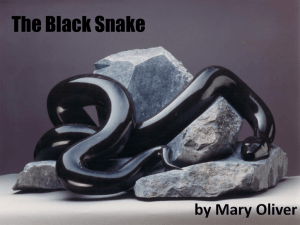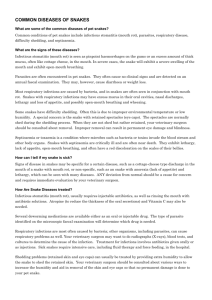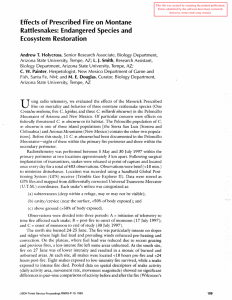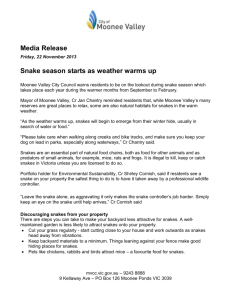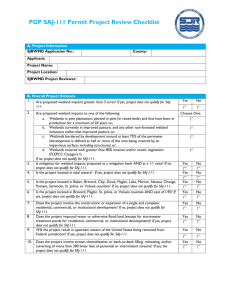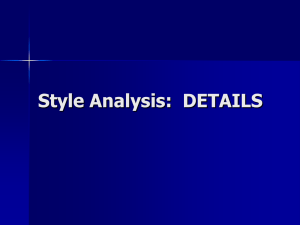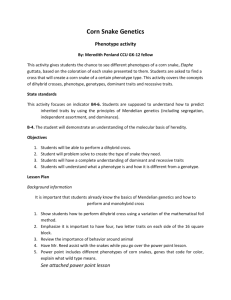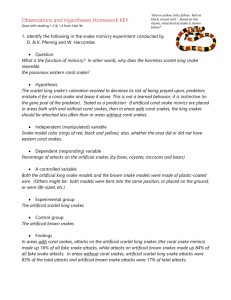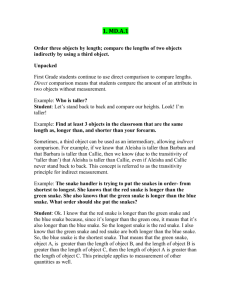Water Snakes and Wetlands
advertisement
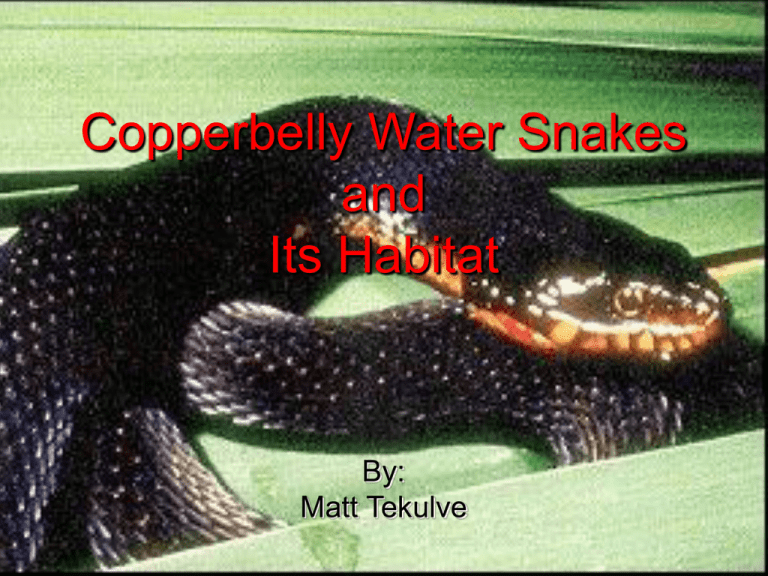
Copperbelly Water Snakes and Its Habitat By: Matt Tekulve Simi-Aquatic and Aquatic Snakes Queen Snake Garter Snake Northern Brown Water Snake Cottonmouth Diamondback Water Snake Midland Water Snake Red, Yellow and Copperbelly Water Snake Adult Identification Copperbelly Water Snake Nerodia erythrogaster neglecta Adult- Solid dark to black dorsal surface with a bright red to orange belly that extends to the chin Length is between 3 to 5 feet Record 62 in . Juvenile Identification Juvenile’s are strongly blotched and banded similar to other juvenile water snakes Similar Species Many times the Copperbelly may be misidentified for: Northern Brown Water Snake Cottonmouth Midland Water Snake Red and Yellowbelly water snake Diet Types of Habitats Wetlands Uplands Wintering Wetlands Types of Wetlands Floodplain Forest Shrub Swamp Undulating Shore line Shallow Open Water Ephemeral Wetland Upland Habitat Copperbelly Water Snakes can travel Hundreds of yards from wetlands mostly in hot months Travel, Shedding, birthing, digestion, refuge Wintering Habitat • Copperbelly Water Snakes Hibernate in Crayfish Burrows Late October to April Movement Copperbelly Water Snakes are Simi- Aquatic Average seasonal Home Range is 20 ha (50 acres) Use 3-5 wetlands regularly Corridors Can not be intimidating Riparian Buffer Strips Short Upland Forest Seasonal Wetlands Distribution North Range- Ohio (Williams Co.) and Michigan (Hillsdale Co.) South Range- SE Illinois, S. Indiana, W Tenn., NW Kentucky Endangered Species List Listed as an Endangered Species in Indiana, Michigan, and Ohio Are Protected under Federal Law No killing of snakes Intentionally or unintentionally Cpperbelly Water Snake Conservation Agreement Formed in 1997 In Illinois and Kentucky Remove Threats to its existence Cooperation of Private and Public Parties Cpperbelly Water Snake Conservation Agreement To do this the state of Kentucky had to: Describe the status of the Copperbelly Why Protection was needed Outline the Conservation Agreement Address the Accomplishments and Weaknesses of the Conservation Agreement Natural Predators Large Fish Snapping Turtles Herons Hawks Foxes Raccoons Opossums Minks Skunks Domestic Dogs, Cats and Hogs Human as Predator: Management Problems Loss of Habitat and Fragmentation Wetland Drainage Wetland Filling Wetland Deepening Agriculture Purposes Surface mining Water Quality Pet Trade Management and Conservation Practices Shallow Ephemeral and Permanent Wetlands Wetlands in close proximity Natural Corridors Stock native amphibian eggs No Fish! Upland, Forested areas to be minimum Timber Harvest Restrict Vehicles and Heavy Equipment Hibernation habitat Edge from Cropland (Buffer Strips) Edge 10-20 feet Bush hogging, mowing and other maintenance should be done in the winter Minimize use of crop and lawn Fertilizers, oil, paints, and other toxic chemicals Ways to Help Learn about endangered species and their Habitat Protect the habitat Educate others Save Me
